The pavilion is based on the natural structural system of a beehive, which involves a vertical hierarchy. The hexagonal pattern creates more volume while using less energy to build. The structure has a high compressive strength as a result of the offset arrangement with short walls and triangulation.


The pattern can be generated by a self-organizing algorithm of three simple rules:
- Queen lays eggs in the center of the comb.
- Worker bees deposit nectar at random (random walk until an empty cell is located).
- They remove pollen and nectar from the brood.
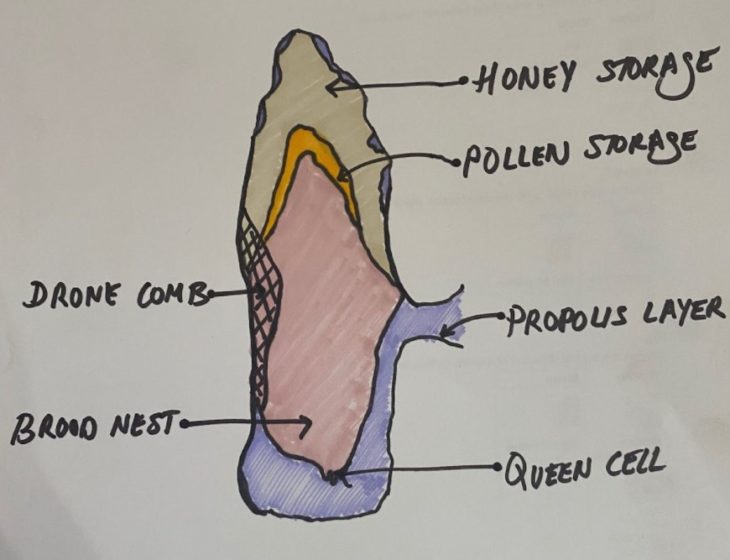
The Game of Life algorithm was used with the plug-ins: Anemone, Cocoon and Weaverbird. This algorithm creates a pattern in a random, but vertical order. The following rules were applied:
- Any live cell with fewer than two neighbors dies, as if by underpopulation.
- Any cell with two or three live neighbors lives on to the next generation.
- Any live cell with more than three live neighbors dies, as if by overpopulation.
- Any dead cell with exactly three live neighbors becomes a live cell, as if by reproduction.
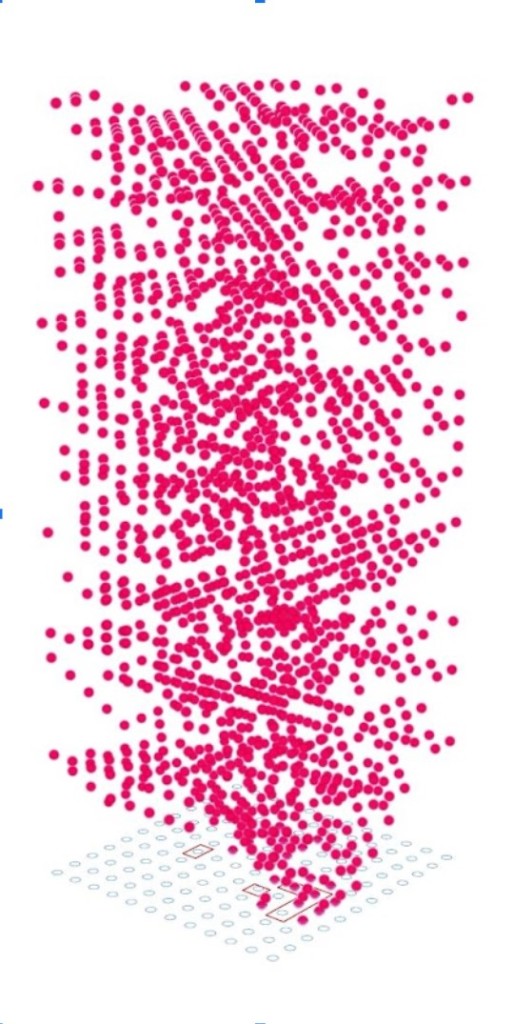
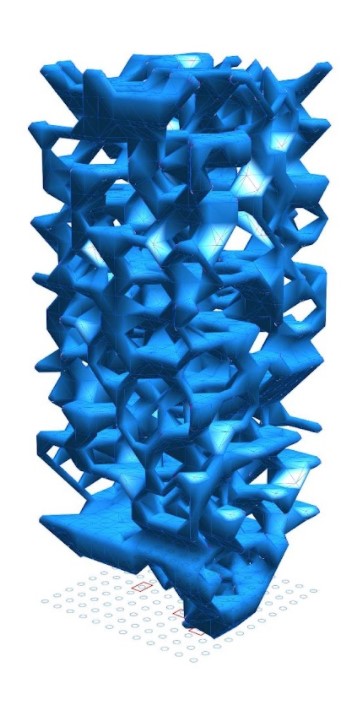
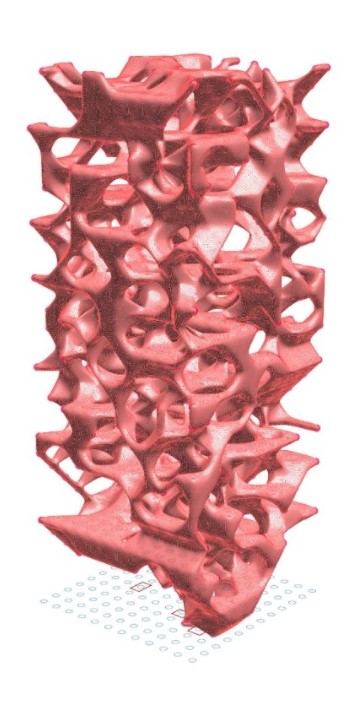
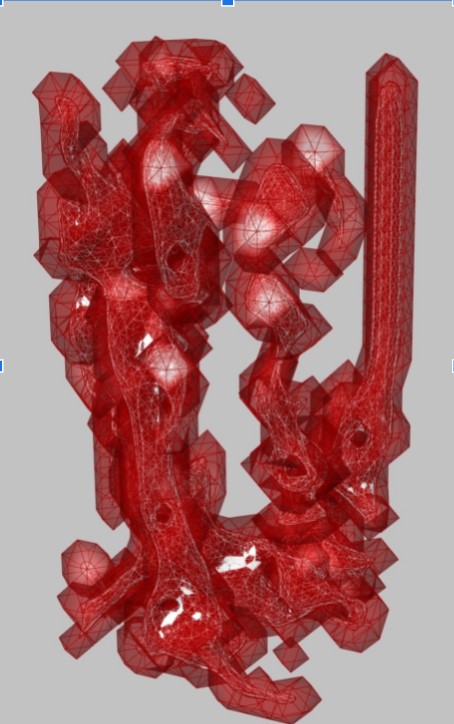
The design workflow involved the development of the parametric script with the Game of Life rules using Anemone loops. Next, a mesh was generated using Cocoon. Mesh relaxation and topology were completed with Kangaroo and Weaverbird, respectively. Finally a structural analysis was done with Karamba and optimization with Wallacei. The optimization process uses the wood beam cross section size as the gene with the objective of minimizing mass as well as displacement.
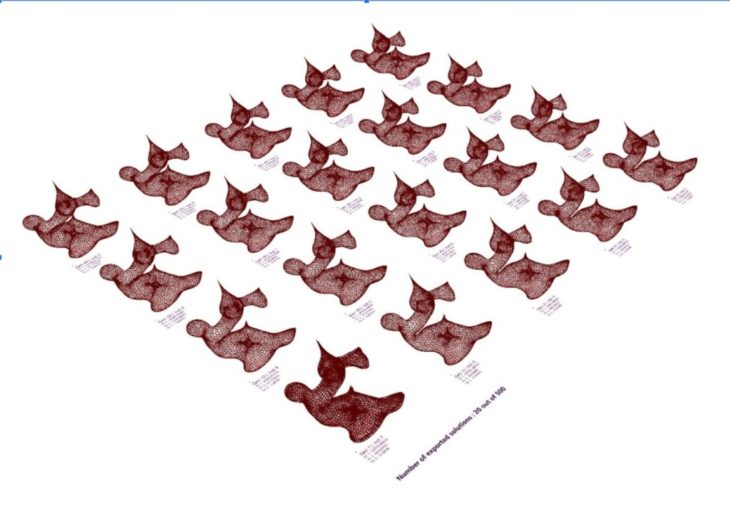
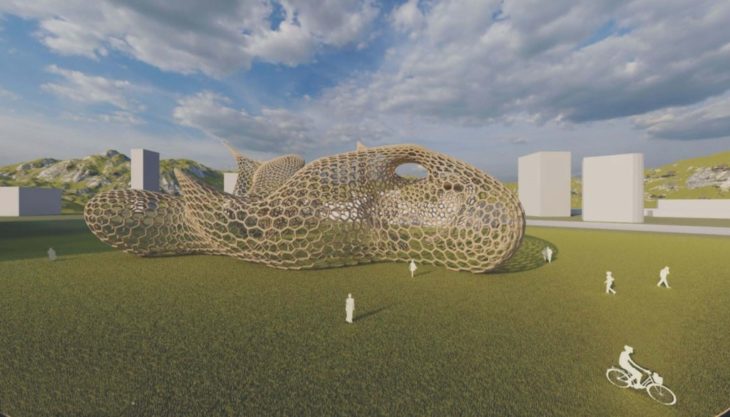
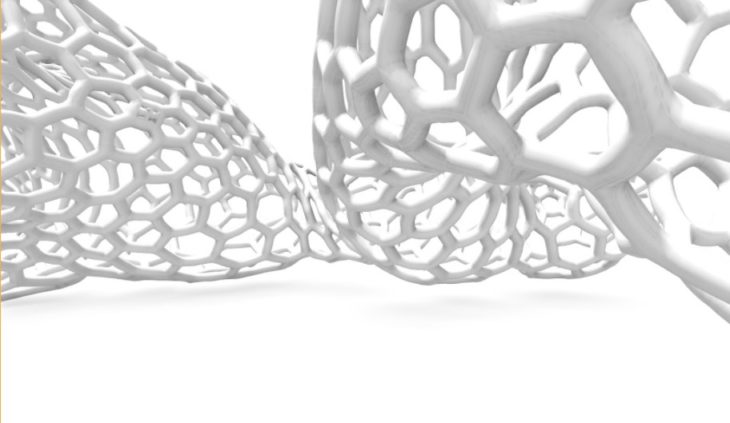
Credits:
The Hive Pavilion is a project of IAAC, Institute for Advanced Architecture of Catalonia developed in the Master in Advanced Computation for Architecture & Design in 2020/21 by:
Students: Shelley Livingston and Gerald Mandevhana
Faculty: Rodrigo Aguirre and Hesham Shawqy